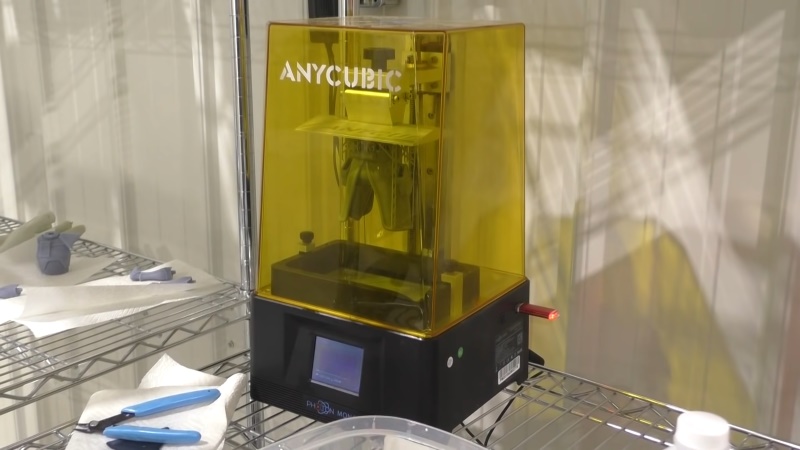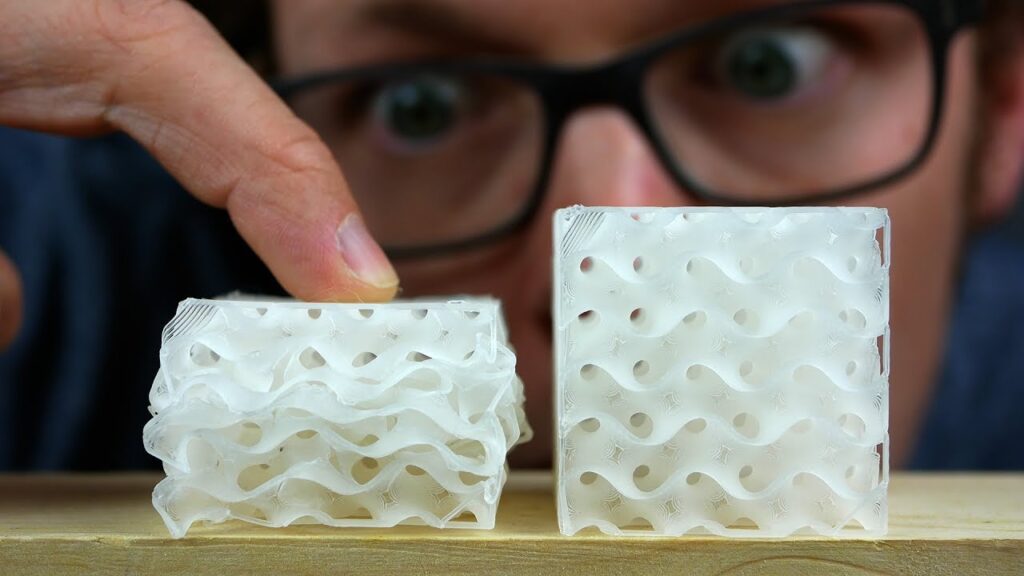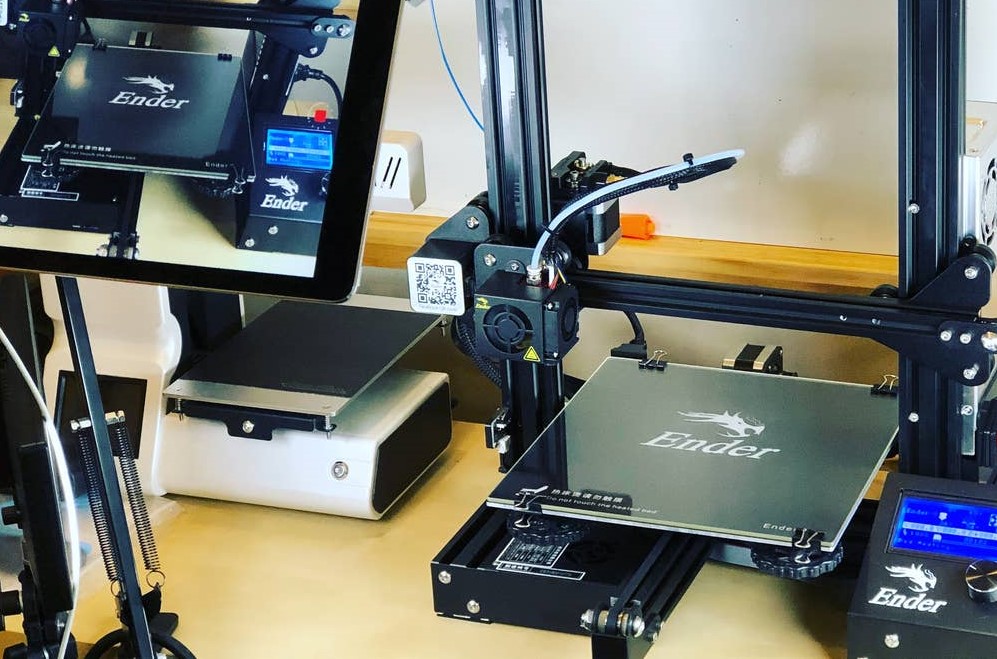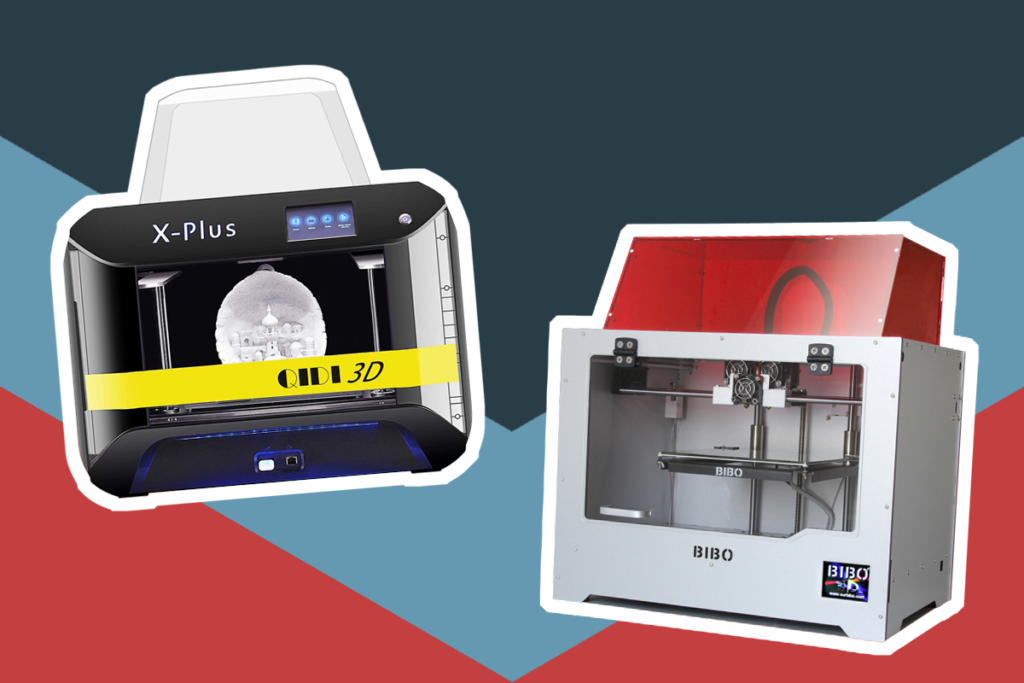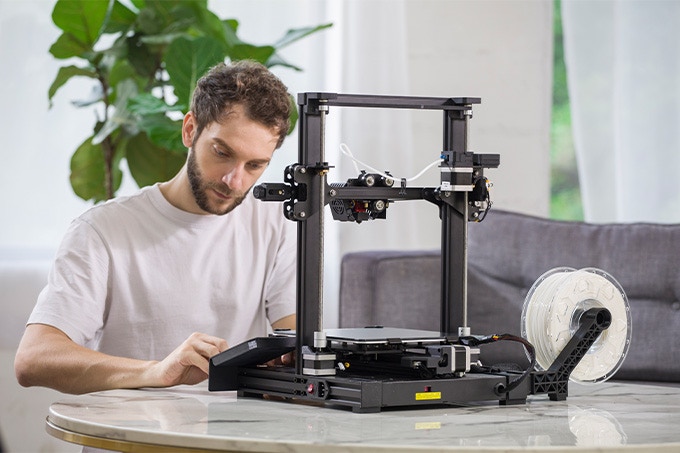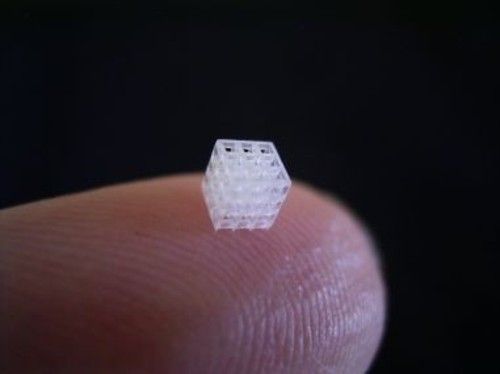

3D scanners are the stepping stones for 3D printing technology to become mainstream. If you need a new toy for your kids or a spare part for your toolkit and can’t find it in stores, you can simply scan the item and print it out. This makes 3D printing much more helpful since you can create endless possibilities for objects.
We’ve reviewed 31 options while choosing the 8 best 3D scanners with the Creality3D CR-Scan Lizard Premium 3D Scanner as our Editor’s Choice. When selecting a 3D scanner, you must consider the accuracy and precision you need for your project. Higher-end scanners will be more accurate and precise but come at a higher price tag. Other factors to consider include scanning speed and portability. Some scanners are handheld and can be easily carried with you on the go; others are large and heavy, making them better suited for stationary use in a studio or workshop.
The Creality3D CR-Scan Lizard Premium 3D Scanner is our Editor’s Choice since it is a top-of-the-line scanner that offers professional-grade accuracy and binocular scanning technology. With its binocular design, the CR-Scan Lizard is able to achieve professional-grade accuracy of up to 0.05mm. The intelligent algorithm makes 3D scanning as easy as taking a video, and there is no need to stick markers anymore – even for big parts like engine hoods, car doors, front or rear bumpers, etc. The CR Studio is developed with the integration of 3D complete automation algorithms, which enable model optimization within one click! Additionally, it supports OTA online updates for free. The CR-Scan Lizard has better material adaptability and can scan black objects, leaving unlimited creativity.
Compared to another Creality scanner listed, like the Creality CR-SCAN 01 Portable 3D Scanner, the Creality3D CR-Scan Lizard Premium 3D Scanner is slightly more expensive. However, what really sets them apart is their capabilities. For those who want color reproduction without having to pair their scanner with an external camera, the CR-SCAN 01 is ideal. With this model, you’ll have to use a cell phone or DSLR. Nevertheless, to its credit, it offers higher scanning accuracy for small models at 0.05 mm compared to its counterpart’s 0.1mm.
The Creality CR-T 3D scanner is the perfect premium, versatile and user-friendly device that makes it easy to create 3D models of real-world objects. With its self-contained texture map and cloud computing storage, the CR-T is ideal for use in AR content production, 3D animation production, and more. Its embedded computing ability and Android operating system make it perfect for use both indoors and outdoors. Plus, its new bone-binding feature makes it easier than ever to create realistic 3D animation.
The Creality CR-T 3D Scanner differs from the two other Creality scanners that made it onto the list by having a 7-inch screen in the design. It also has a built-in CPU, an Android operating system, and in-body storage. There’s also a 6200 mAh battery. As such, it’s the only one out of the three options that can be used without being plugged into a computer. This makes it ideal for transport when you’re looking to keep your luggage light.
The Creality CR-SCAN 01 Portable 3D Scanner is a portable professional, high-precision scanner that is perfect for capturing small details. It features multiple scan modes, powerful model processing methods, and wide application usage. The CR-SCAN 01 makes it easy to use by simply powering on and scanning with no need to calibrate or mark. With its USB plug-and-play compatibility, it is perfect for Windows users. This scanner is also handheld for more flexible scanning and can capture objects of different sizes without needing points marked.
Compared to the Creality3D CR-Scan Lizard Premium 3D Scanner, the Creality CR-SCAN 01 Portable 3D Scanner features a flatter design. It’s also slightly cheaper. Nevertheless, one of the easily comparable differences between the two regarding is the CR-SCAN 01 has a color sensor while the Lizard Premium model doesn’t. Therefore the setup for this model may be a little less complicated as no cameras need to be attached. The Lizard Premium pick, on the other hand, should be the go-to pick if you’re dealing with smaller models due to the higher detail accuracy.
The EinScan SE Desktop 3D Scanner is one of the newest and best desktop scanners on the market. It features a 3D resolution of 0.17~0.2mm, single shot accuracy of <0.1 mm, and a max scan volume of 700x700x700 for fixed scan and 200mm x 200mm x 200mm for the auto scan. The scanner also has a manual alignment mode for fixed scan and a turntable/manual alignment mode for the auto scan. It is not compatible with Mac systems but does support Microsoft Windows systems. The EinScan SE Desktop 3D Scanner is a great choice for anyone looking for a high-quality and affordable 3D scanner.
The Newest EinScan SE Desktop is for those who want a 3D scanner companion for their Desktop 3D printers since it’s just the right form factor and design. It also works best for those with 64-bit Windows PCs that range from Windows 7, 8, or 10. Other requirements for it to work with your PC include having 16GB plus of RAM, at least 2GB of Nvidia graphic memory, and a Core i5 CPU or higher. Notably, it doesn’t work with macOS, so if you have a Mac computer, you may want to consider other alternatives.
The Tomshoo Sense Pro is a high-quality handheld 3D scanner that is perfect for those who want to capture life in three dimensions. With its simple operation and wide scanning capabilities, the Sense Pro is perfect for a variety of uses, from 3D printing and animation design to industrial modeling and more. Additionally, the Sense Pro comes with a number of features that make it even easier to use, including a withdrawing function that allows you to cancel a scan at any time and an adaptive stitching algorithm that quickly corrects for any deformation in the scanned object. Whether you’re looking to capture a special moment or create something truly unique, the Tomshoo Sense Pro is the perfect tool for the job.
The Tomshoo Sense Pro Handheld 3D Scanner compares easily with the New Einscan Pro 2X 3D Scanner that follows it on the list, given they’re both handheld devices. As such, the way you hold and use the two devices is pretty similar. However, the prices of the two devices are quite a ways apart. If you’re looking for an amateur option, this Tomshoo Sense model makes a lot of sense, given the price range. If you’re looking for a professional-level device, the Einscan Pro is a better bet, although it’ll cost you significantly more.
The Einscan Pro 2X 3D Scanner is the best scanner for reverse engineering and is a premium edition with handheld HD feature alignment. It is ideal for scanning small to medium size objects (1 inch to 5 feet). Output formats STL,OBJ,PLY,ASC,P3,3MF. High Accuracy: 0.045mm in Handheld mode and 0.04mm in Fixed mode with Turntable. Factory tested accuracy according to VDI/VDE 2634 standards. Catch fine detail: Best resolution up to 0.2mm in Handheld mode, 0.16mm in Fixed mode. High-quality 3D data modeling. Versatile Scan mode & Align Modes. Brand new UI & workflow Scanning Software EXSCAN PRO. Bundled with Solid Edge CAD design software.
Compared to the other 3D scanners on the list, the New Einscan Pro 2X 3D Scanner is easily the best professional-level device. This is rubber-stamped by the fact that it’s several times more expensive than its counterparts. Its scan accuracy is one of its more impressive attributes, with few alternatives offering something better. However, what really sets it apart is its scan speed. At 30 fps, the closest alternative has a 10 fps scan speed meaning it would take way longer to finish scanning models. Therefore, with this option, you can handle a bigger workload.
The Revopoint MINI 3D scanner is a small, versatile, and easy-to-use scanning solution that offers industrial-grade precision with a single-frame accuracy of up to 0.02mm. The scanner’s blue light technology projects ultra-high-resolution structured light, making it ideal for scanning in ambient light conditions. With a scanning speed of up to 10 frames per second, the Revopoint MINI 3D scanner is perfect for capturing smooth movements when scanning objects. The scanner also features a powerful hardware system for fast data transfer and charging. Weighing only 160g, the Revopoint MINI 3D scanner is portable and comfortable to hold, making it an ideal solution for professionals on the go.
The Revopoint MINI 3D Scanner is fairly similar to the Creality3D CR-Scan Lizard Premium 3D Scanner in that both can offer 0.05mm accuracy. However, where the Creality Lizard Premium maxes out there, the Revopoint can go a step further to 0.02mm accuracy. Another point in favor of the Revopoint MINI is the compatible devices. The Lizard Premium can work with Windows and macOS devices, while the Revopoint also works with Android and iOS. Therefore, if you foresee a situation where you’ll need to use a phone instead of a PC, the MINI becomes the only choice.
Htovila XYZprinting Handheld Full Color 3D Scanner is a professional scanner that uses Intel RealSense 3D camera technology and offers perfect value for money. It captures full-color textures of objects accurately and quickly, so you can have a smoother scanning experience. With its simple operation, you can just USB plug and play. It also supports measurement, cutting, color matching, browsing, and switching colors. Plus, it is compact and portable, so you can take it with you wherever you go. You can use it to scan objects within 20 cm to 100 cm * 100 cm * 160 cm. It’s perfect for 3D printing, animation design, industrial design, modeling, and more.
The Htovila XYZprinting Handheld Full Color 3D Scanner is for buyers with a limited budget, as it’s easily the most affordable option listed. It’s also one of the easiest 3D scanners to set up, given the USB cable comes attached. With the software installed, all you’d have to do is plug in the device to the USB port on your computer. Another reason to buy it over the more expensive alternatives listed is the compact form factor, especially if you want a scanner you can travel with alongside your laptop.
3D scanners have become increasingly popular in recent years as the technology has progressed and prices have dropped. There are now many different types and brands of 3D scanners on the market, each with its own strengths and weaknesses. When choosing a 3D scanner, it is important to consider what type of objects you will be scanning, as well as what sort of accuracy and resolution you need. Some 3D scanners work best with small objects, while others are better suited for larger ones. The price of a 3D scanner also varies widely, depending on the features and quality you need.
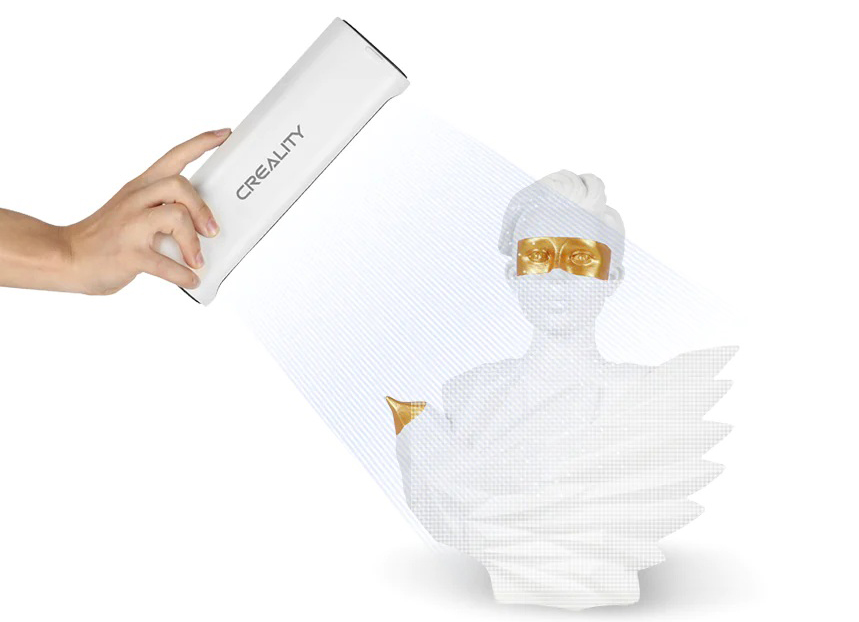
There are two main types of 3D scanners: contact and non-contact. Contact scanners require physical contact with the object being scanned in order to create a 3D model. These scanners often use laser triangulation, which involves shining a laser on the object and measuring the reflected light to calculate the distance from the scanner. Non-contact scanners do not require physical contact and can be used to scan large objects or objects that are difficult to reach. These scanners typically use photogrammetry, which uses cameras to take multiple pictures of the object from different angles and then uses software to stitch the images together into a 3D model.
There are many factors that affect the accuracy of 3D scanners, such as the type of scanner, the environment in which it is used, and the objects being scanned. When choosing a 3D scanner, it is important to consider the intended use and choose a model that is appropriate for the task. For example, if you need to scan large objects with fine detail, you will need a different scanner than if you only need to scan small objects quickly. The accuracy of 3D scanners can also be affected by environmental factors, such as lighting and humidity. If you are using a scanner in an industrial setting, it is important to make sure that the conditions are ideal for scanning. Finally, the object being scanned can also affect accuracy. If the object is very large or has intricate details, it may be difficult to get an accurate scan. Choose a 3D scanner that is right for your needs, and make sure to use it in the ideal conditions to get the best results.
3D scanners come in a variety of resolutions, from low-end consumer devices to high-end industrial machines. The resolution of a 3D scanner is determined by the number of points it can accurately capture and the size of the area it can scan. Low-resolution scanners may only be able to capture a few hundred points, while high-resolution scanners can capture millions of points. The resolution also depends on the distance between the scanner and the object being scanned; closer objects will appear more detailed than those that are further away. Ultimately, the resolution you need will depend on the purpose for which you are using the scanner. If you only need a general idea of an object’s shape, then a lower-resolution scanner will suffice. However, if you need to capture fine details or create a highly accurate 3D model, then you will need a high-resolution scanner. Check out our comprehensive guide on the best high-resolution 3d-printers to ensure the quality of your 3D projects.
3D scanners come in a variety of speeds, from slow and steady to quick and nimble. The speed of a 3D scanner is determined by the type of sensor it uses. Laser scanners are generally the fastest, followed by structured light and time-of-flight sensors. Each has its own advantages and disadvantages, so it’s important to choose the right one for your needs.
Laser scanners are the quickest option, but they can be more expensive than other types of sensors. They work by sending out a laser beam and measuring the time it takes for the beam to bounce back. This gives them a very precise measurement of distance, making them ideal for scanning large objects quickly. However, they can’t penetrate materials like walls or opaque objects, so they’re not suitable for everything.
Structured light scanners are a bit slower than laser scanners, but they’re less expensive and can penetrate some materials. They work by projecting a pattern of light onto an object and measuring how the light is distorted when it bounces back. This information is used to create a 3D model of the object. However, structured light scanners can’t penetrate reflective surfaces like mirrors, so they’re not always the best choice.
Time-of-flight sensors are the slowest type of 3D scanner, but they’re also the most affordable. They work by sending out a pulse of light and measuring how long it takes for the pulse to bounce back. This information is used to calculate the object’s distance, and a 3D model can be created from there. Time-of-flight sensors can penetrate some materials, but they’re not as accurate as other types of sensors.
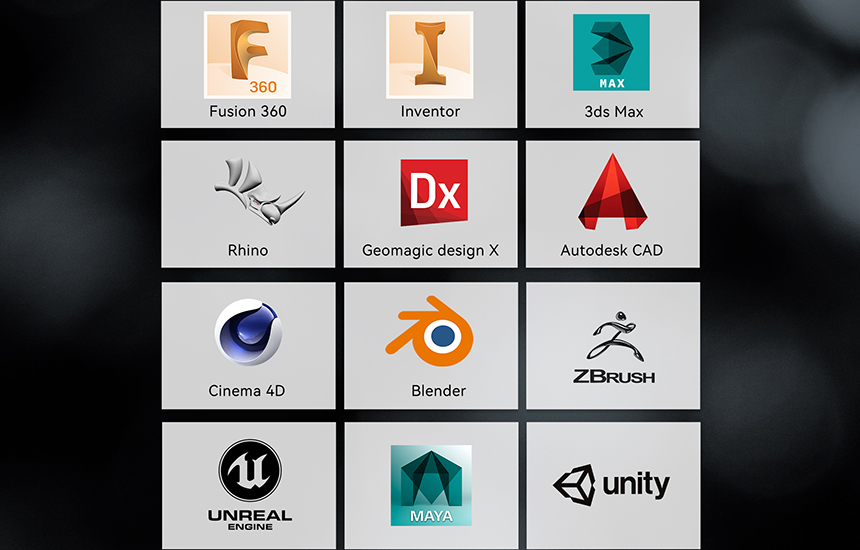
Connectivity is an important consideration when choosing a 3D scanner. Most scanners use USB, but some offer Bluetooth connectivity. If you need a portable scanner, look for one that pairs with a smartphone or power bank.
The software that comes with a 3D scanner can range from basic scanning tools to advanced suites with post-processing options. It goes without saying that the software provided by each scanner is appropriate for the target demographic. Pay more for a professional instrument, and you’ll get a more advanced set of functionality.
If you are a hobbyist interested in 3D printing, entry-level 3D scanners may be the right option for you. They are reasonably priced and work well, although they don’t have the speed or detail of more expensive models.
We prefer handheld 3D scanners for larger models. These allow you to capture all of the complexity and breadth of bigger things in fine detail and motion. A large scan surface helps to speed up scanning big items.
Look for stationary scanners, ideally with a turntable, tripod, and an optimized alignment algorithm, if capturing all the rich details and texture of a model is at the top of your list for small fixed object scanning.
3D scanners come in a variety of shapes, sizes, and prices. Some common output formats for 3D scanners include STL, PLY, OBJ, VRML, and XYZ. Each format has its own advantages and disadvantages. For example, STL files are the most common format used for 3D printing, but they are not well suited for editing or color information. On the other hand, PLY files can store color information but are not as widely supported by 3D printers. Ultimately, the best output format for a 3D scanner depends on what you plan to do with the scanned data.
One of the most important things to consider when choosing a 3D scanner is compatibility. Not all scanners will work with every type of computer or software. Make sure to check that the scanner you are considering is compatible with the type of equipment you have. Otherwise, you may not be able to use all of the features or get the full benefits of the scanner. Another thing to keep in mind is that some scanners require special software in order to work properly. This software can be expensive, so be sure to factor that into your budget when choosing a 3D scanner.
A 3D scanner is a device that analyses a real-world object or environment to collect data on its shape and possibly its appearance (e.g. color). The collected data can then be used to construct digital three-dimensional models. scanners are used in a variety of industries, including engineering, design, manufacturing, archaeology, paleontology, forensic science, medicine, customs, and security.
Portability is an important factor to consider when choosing a 3D scanner. Some scanners are handheld, and others are stationary. Stationary scanners are usually more accurate but less portable than handheld scanners. If you need to scan large objects or environments, a stationary scanner may be the better option. However, if you need to scan smaller objects or you need to be able to move the scanner around, a handheld scanner may be a better choice. [/wpmfc_cab_ss]

There is a wide range of prices for 3D scanners. The least expensive scanners can be found for around $500, while the most expensive ones can cost upwards of $10,000. For the average person, a middle-of-the-range scanner will probably suffice. Some things to keep in mind when considering price are the quality of the scan, the accuracy of the scan, and the features offered by the scanner. It is also important to consider whether you need a portable scanner or one that is stationary. Portable scanners are usually more expensive, but they offer the flexibility to be used in different locations. Stationary scanners are typically less expensive, but they require a dedicated space in which to be used. Ultimately, the price of the scanner should be based on your specific needs and budget.
3D scanners work by taking a series of pictures or measurements of an object from different angles. These images or measurements are then fed into a computer that reconstructs them into a three-dimensional model.
There are several different types of 3D scanners, each with its own strengths and weaknesses. Some work best for small objects, while others can handle larger objects. Some produce very detailed models, while others are more suited for generating lower-quality models that are good enough for many purposes.
The specific type of scanner you need will depend on what you want to use it for. If you just want to generate a rough model of an object, then a less expensive and lower-quality scanner may be sufficient. But if you need a high-quality model for 3D printing or other purposes, then you’ll need to invest in a more expensive scanner.
3D scanners can be used to create models of just about anything, including people. This technology is often used in medicine to create patient-specific models for prosthetics or implants. It’s also used in the gaming industry for creating realistic character models.
3D scanning technology is constantly improving and evolving. Newer scanners are capable of producing higher-quality models with greater accuracy. And as prices continue to drop, 3D scanners are becoming more affordable for hobbyists and small businesses. Additionally, you can check out our article about the best 3d printers for small business that will definitely help you develop your ideas.
There are many benefits of using 3D scanners. Perhaps the most obvious benefit is that they can create a highly accurate representation of an object. This can be extremely useful for creating models or prototypes, as well as for reverse engineering purposes.
Another benefit of 3D scanners is that they can be used to create digital archives of physical objects. This can be useful for historical preservation and creating a record of an object in case it is lost or damaged.
3D scanners can also be used to create customized products. For example, a company might use a 3D scanner to scan a customer’s body in order to create a custom-fitted piece of clothing.
Overall, the benefits of 3D scanners are numerous and varied. They are versatile tools that can be used for a variety of purposes, both practical and creative.
3D scanning technology can be useful in a number of different spheres. Here are some examples:
3D scanners can be used to create three-dimensional models of sculptures and other works of art. This can be helpful for artists who want to create replicas or copies of their work or for those who want to create digital versions that can be printed using 3D printers.
3D scanners can be used to create accurate models of buildings and other structures. This can be helpful for architects who want to create Virtual Reality simulations or for those who want to create models that can be used in construction planning. If you want to continue developing your architectural skills, check out our comprehensive guide on the best 3d printer for architects.
3D scanners can be used in education to create models of anatomical structures, historical artifacts, and other objects. This can be helpful for students who want to learn about a particular subject or for teachers who want to create lesson plans that incorporate three-dimensional models.
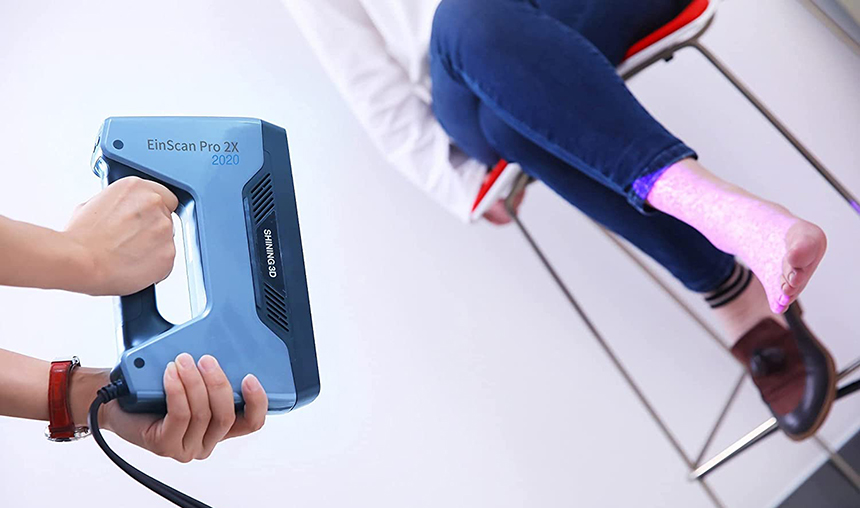
3D scanners can be used in medicine to create models of human organs and tissues. This can be helpful for doctors who want to understand a patient’s condition better or for researchers who want to study the effects of diseases and treatments on three-dimensional models.
3D scanners can be used in manufacturing to create models of products and parts. This can be helpful for companies that want to create prototypes or test new designs.
3D scanning technology has a wide range of potential applications. These are just a few examples of how this technology can be used.
There are a few ways to scan an object for 3D printing. One popular method is using a laser scanner, which scans the object and creates a 3D model from the data. Other methods include using a camera to capture images of the object, which are then used to create a 3D model. Additionally, there are software programs that can be used to create a 3D model from scratch.
When selecting a method for scanning an object, it is important to consider the accuracy and resolution that are required for the final 3D print. For example, if you are looking to create a highly detailed replica of an object, you will need to use a scanner with high accuracy and resolution. On the other hand, if you are looking to create a basic 3D model, you can use a less expensive and lower-resolution scanner.
Once you have selected a scanner, the next step is to set up the scanning area. This includes choosing a location with good lighting and an unobstructed view of the object. Additionally, it is important to make sure that the object is placed on a level surface before beginning the scan.
After the scanning area is prepared, the next step is to begin scanning the object. Depending on the type of scanner being used, this process can take anywhere from a few seconds to several minutes. Once the scan is complete, the data will be stored on the computer and can be used to generate a 3D model.
Finally, once the 3D model is created, it can be exported to a variety of file formats for printing. These include STL, OBJ, and PLY. Additionally, the model can be saved as a project so that it can be edited and modified in the future.
3D scanners are devices that capture the dimensions of an object in three-dimensional space. These devices use various technologies to create a digital representation of an object, which can then be used for a variety of purposes, such as CAD modeling, 3D printing, and rapid prototyping.
However, it must be properly calibrated before a 3D scanner can be used to create an accurate digital model of an object. This process ensures that the device is able to capture the dimensions of an object accurately. Without proper calibration, a 3D scanner may produce inaccurate results.
There are a number of reasons why you might need to calibrate your 3D scanner. For example, if you’re using the device to create a digital model of an object for 3D printing, it’s important to ensure that the model is accurate. Otherwise, you may end up with a print that doesn’t fit together correctly.
In addition, if you’re using a 3D scanner to create a CAD model of an object, it’s also important to ensure that the model is accurate. This is because inaccuracies in the CAD model could lead to problems when the model is used for manufacturing or other purposes.
Finally, if you’re simply using a 3D scanner for its intended purpose – to capture the dimensions of an object – it’s still a good idea to calibrate the device. This will help to ensure that the results you obtain are as accurate as possible.
Calibrating a 3D scanner is important in order to achieve accurate results. There are many factors that can affect the calibration of a 3D scanner, such as the type of scanner, the object being scanned, and the environment. Here are some tips on how to calibrate a 3D scanner:
Follow these tips, and you will be able to achieve accurate results when scanning with a 3D scanner.
Reverse engineering is the process of taking something apart and analyzing it to figure out how it works so that you can recreate or improve upon it. 3D scanners can be a helpful tool in reverse engineering because they can create a detailed 3D model of an object. This model can then be used to understand better how the object is put together and design a new or improved version.
3D scanners can also be used to create models for prototyping or manufacturing new objects. If you have an idea for a new product, you can use a 3D scanner to scan an existing similar object and then use that model to create a prototype of your new product. This can be a quick and easy way to create a prototype without having to design everything from scratch.
3D scanners can also be used to create models for 3D printing. This can be helpful if you need to create a small number of parts or objects and don’t want to go through the hassle and expense of setting up a traditional manufacturing process.
Overall, 3D scanners can be a helpful tool in reverse engineering, prototyping, and manufacturing. They can help you save time and money by allowing you to scan existing objects and then use those models to create new ones.
There are many reasons why someone might want to reverse engineer something. Some of the most common reasons include the following:
Reverse engineering can also be used to create compatible products. For example, if a company wants to make a device that uses another company’s software, it would need to reverse engineer the software to understand how it works and make its own version compatible with it.
This is often done with historical artifacts or objects for which the original plans no longer exist.
In some cases, reverse engineering can also be used to improve upon a design that is already known. For example, if a company wants to make a small change to a product, it may first need to reverse-engineer the product in order to understand how it works and figure out where the change needs to be made.
There are several limitations of 3D scanners that, include the following:
There are a few ways to tell if your scanner is working properly. One way is to scan a test object and see if the 3D model appears as it should. Another way is to check the calibration of the scanner. If the scanner is not calibrated properly, the 3D models may be inaccurate. Finally, you can also check the software settings to make sure that everything is set up correctly.
3D scanners come in all shapes and sizes and with a variety of different features. Some are designed for use in specific environments, while others can be used in a variety of settings.
If you’re looking to use a 3D scanner outdoors, there are a few things you’ll need to keep in mind.
With these things in mind, you should be able to find a 3D scanner that will work well for your needs. Just be sure to do your research before making a purchase.
The Creality3D CR-Scan Lizard Premium 3D Scanner is an excellent scanner with professional-grade accuracy and binocular scanning technology. With its binocular design, the CR-Scan Lizard can achieve professional-grade accuracy of up to 0.05mm. The intelligent algorithm makes 3D scanning as easy as taking a video, and there is no need to stick markers anymore.
The Creality CR-T 3D scanner is a versatile and user-friendly device that makes it easy to create 3D models of real-world objects. With its self-contained cloud computing storage, the CR-T is ideal for AR content production, 3D animation production, and more. Its embedded computing ability makes it perfect for indoors and outdoors.
The Creality CR-SCAN 01 Portable 3D Scanner is one of the best 3D scanners for those who need a professional, high-precision scanner that is easy to use. It features multiple scan modes and powerful model processing methods, making it perfect for capturing small details.
